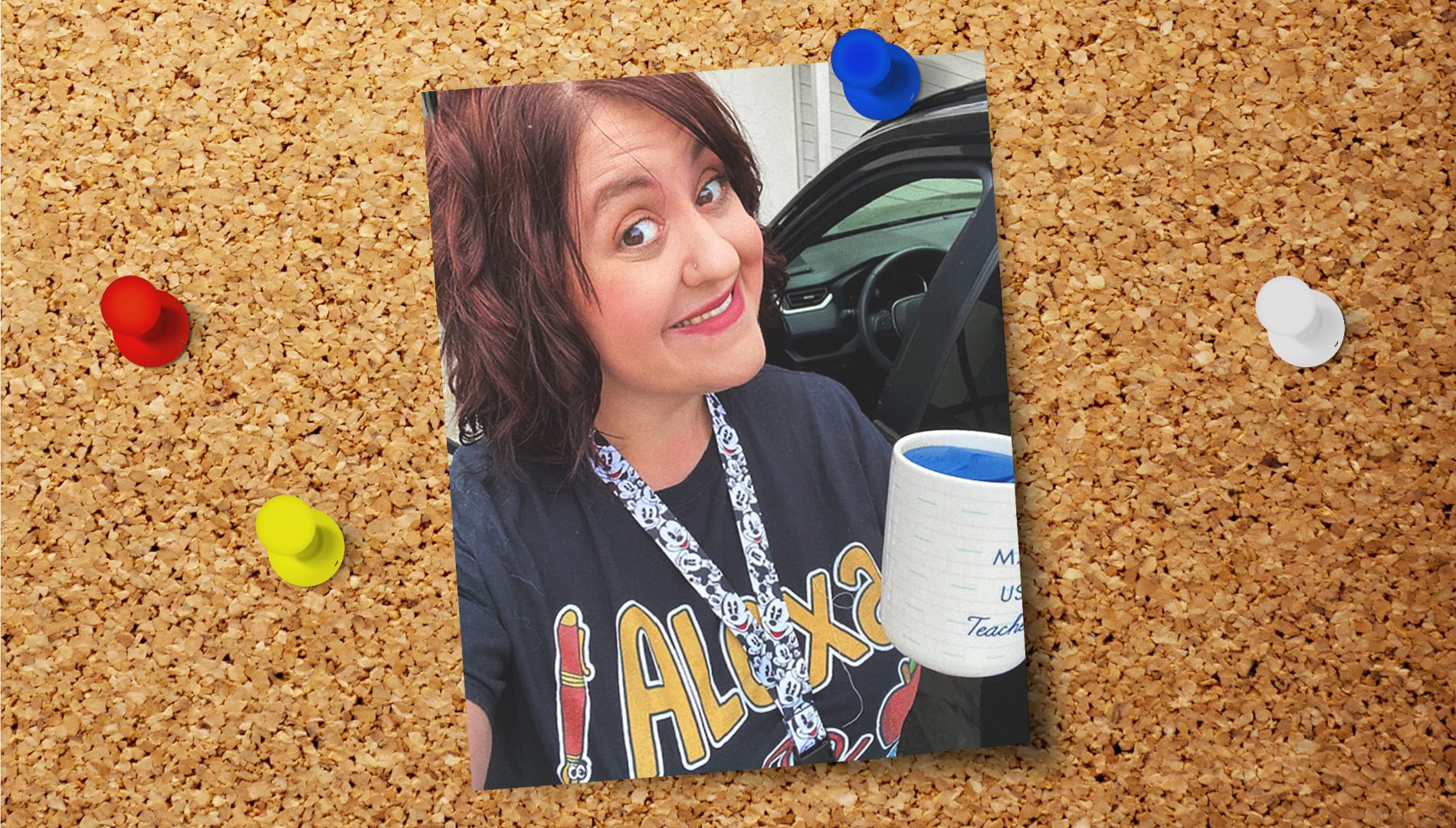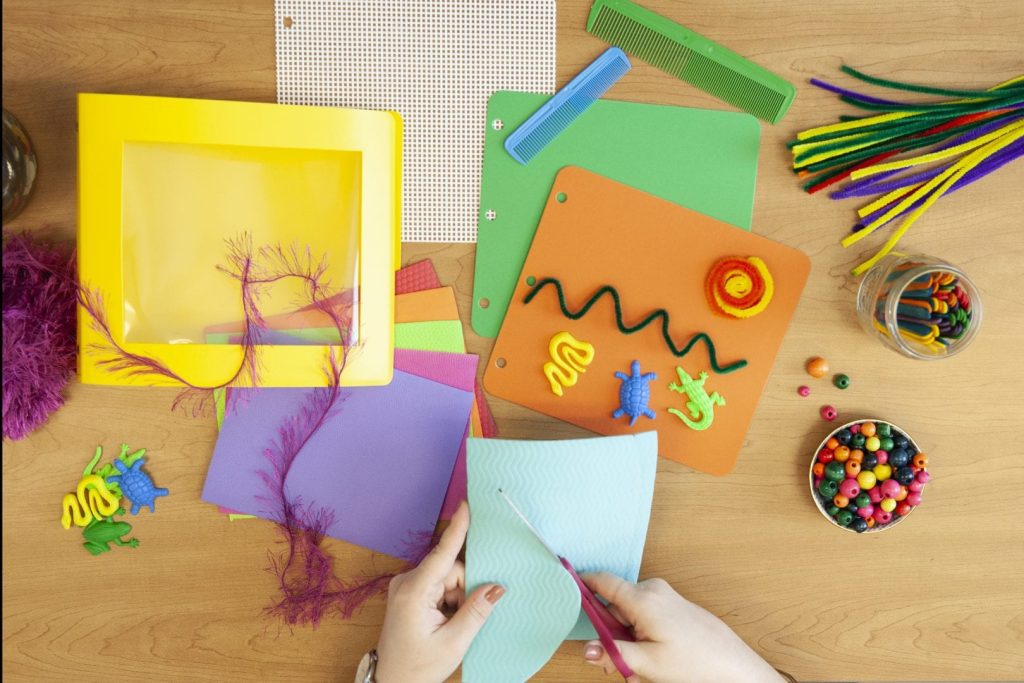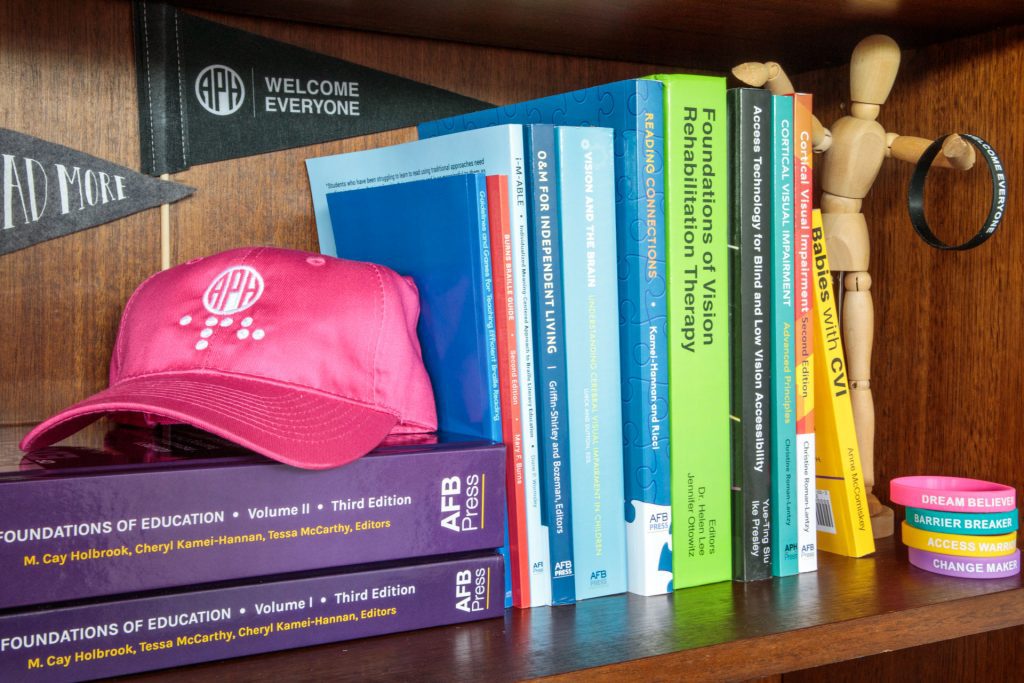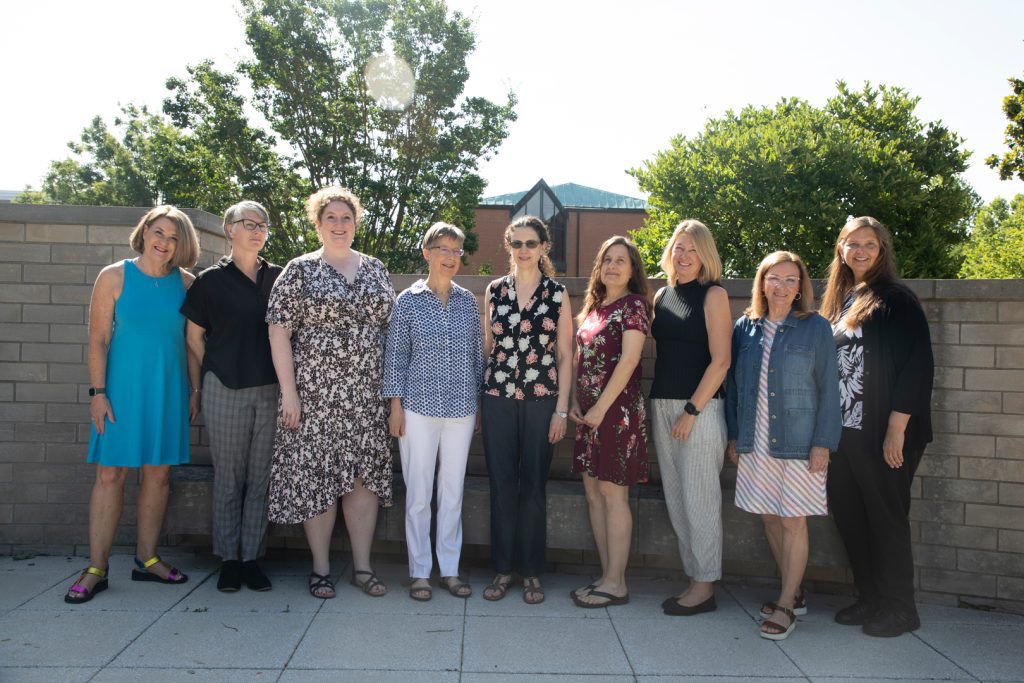To ensure gift delivery by 12/25, please place orders via UPS shipping no later than 12/17.
CloseA TVI’s Simple Solutions for Elementary Students

Sometimes, it is those simple, low-tech materials that make all the difference. We spoke with Elizabeth Umphress, a Teacher of the Visually Impaired (TVI), about her experience in the classroom and the APH products she incorporates into her curriculum when teaching students in preschool through first grade.
Jobs Across the Country
Elizabeth Umphress has been a TVI for 12 years. She attended Portland State University with the hopes of becoming a kindergarten teacher. Unfortunately, in 2006, general education positions were being cut in her area. As a result, the university encouraged students to study special education, thereby making them more marketable. This led Elizabeth into the university’s TVI program. Upon graduation, she earned a Bachelor’s of Arts in Science and a Master’s Degree in Teaching the Visually Impaired. Elizabeth said, “I kind of fell into the field, but I could not imagine doing anything else on the planet. If someone told me tomorrow I could no longer be a TVI, I would truly be lost.”
Elizabeth’s career began at the Colorado School for the Deaf and Blind, where she student taught and was subsequently offered a position after graduation. While she started as an elementary teacher, serving students ages kindergarten through fifth grade, Elizabeth has worked with students of all ages in a variety of roles. From working with fifth through ninth graders in a life skills classroom in Oregon, to six years spent as an itinerant TVI for students 2 to 21 in Seattle, Elizabeth’s career has taken her all over. She currently lives in Washington where she works in a resource room with four paraeducators and two brailleists, serving twelve students (K-6) at multiple learning levels.
“I strive to empower my students by giving them all the tools and independence they need to be successful,” said Elizabeth. We’re proud to say these tools come in the form of APH products. To assist other educators in the field, Elizabeth shared with us how she uses some of the products that aid in her elementary students’ success.
Small Work-Play Tray (Yellow and Black)
Elizabeth says she has found many uses for these small trays throughout the day. During snack and lunchtime for preschoolers, she’ll add the students’ cup, plate, and other utensils to the tray. Then, she will help students orient themselves to where the food is on their plate, and teach them how to keep track of the other items.
In the classroom, the trays are used as designated workspaces for students and to supplement activities such as coin identification and sorting, as well as sensory activities. “Sensory activities are activities that improve tactile discrimination,” Elizabeth explained. For these exercises, she will add rice, dried noodles, shaving cream, Playdough, or hair gel to the students’ trays. Elizabeth found that the shaving cream and hair gel were favorites among her students. The lip on the tray ensures that these substances do not fall off and make a mess. On top of that, all of the materials stay organized and are easy for the students to find and keep track of so that nothing was lost.
All of Elizabeth’s students have at least one tray, but some have more than one if they go to different classrooms throughout the day. Placing trays in every classroom streamlined the process of learning because teachers and students were not scrambling to get the student’s materials together every single time they had class. Rather, the student’s materials can be personalized to their needs.
This also builds independence in the classroom and takes out the element of surprise as students move from class to class. If it’s on the tray, the student doesn’t have to ask for help finding their materials as they learn how to navigate the area themselves.
All-In-One Board
One of Elizabeth’s favorite things about the All-In-One Board is that the surface can be adjusted to use at different angles, allowing students to find a more comfortable sitting position as they complete their schoolwork. “It’s different from a typical white board because it has a stand; so, it gets their body upright and off of the table, improving their posture,” said Elizabeth. For students who are beginning to learn Orientation and Mobility (O&M), instructors can easily use the Velcro side of the All-In-One Board along with the mapping pieces from the Picture Maker Wheatley Tactile Diagramming Kit to create tactile maps depicting different routes for students to explore. During her lessons, Elizabeth used the included dry erase markers to write simple sentences on the board. She asked her low vision students to braille the words in the sentence. In a similar exercise, students underlined the words on the board that had contractions in braille. Students were also able to see and solve math problems that Elizabeth wrote on the board.
In other lessons, Elizabeth paired the All-In-One Board with APH’s Textured Sorting Circles and Shapes. She drew a line down the middle of the All-In-One Board and gave the students these magnetic shapes: circles, squares, triangles, and stars. The magnetic shapes have smooth, rough, and bumpy textures. They also come in a variety of sizes (small, medium, and large) and colors (red, yellow, and blue). The students are then instructed to sort the shapes on the magnetic All-In-One Board. This helped them learn about colors and textures and identify sizes such as big and little. The exercise also improved students’ tactile sensitivity. When she taught this lesson with her low vision students, Elizabeth put a cover over the board to help them learn things tactually and not depend on their eyes. Elizabeth also directed the students in grouping, counting, and shape identification activities. For teachers’ convenience, she recommends storing these items together in a bag.
In another instance, students were assigned to identify “same and different” shapes. Elizabeth recalls a particular student who had a hard time understanding these concepts until he used the Textured Sorting Circles and Shapes. He was given five smooth green circles and one bumpy red circle. The student spent some time moving the shapes to the different sides of the board until, one day, he understood that the green objects were different from the red one.
Elizabeth said, “I always tell my students they can do anything anyone else can do. They just do it in a different way.”
Elizabeth believes APH products work great for assisting students in achieving knowledge and independence. “Anything from APH is worth trying out. You never know what will work for your students until you try. Many products are versatile and can be used in a variety of ways.”
You can find all of our products on our website at aph.org/shop/.
Are you an educator or specialist who would like to share your story with us? Send an email to communications@aph.org for a chance to be featured in an upcoming issue of APH News.
Share this article.
Related articles

Tactile Book Builder Kit: Equipping Educators to Meet a Multitude of Needs
At APH, we strive to create products that assist both teachers and students with unique learning needs. The Tactile Book...

Activities for Teaching Reading Skills
Reading is an important skill used in daily living. Yet many children struggle with becoming proficient readers. The APH Press...

APH Behind the Scenes: Building on Patterns
Caption: From left to right: Luanne Blaylock (AR), Kate Dilworth (OR), Kristen Buhler (OR), Anna Swenson (VA), Cathy Senft-Graves (APH),...
